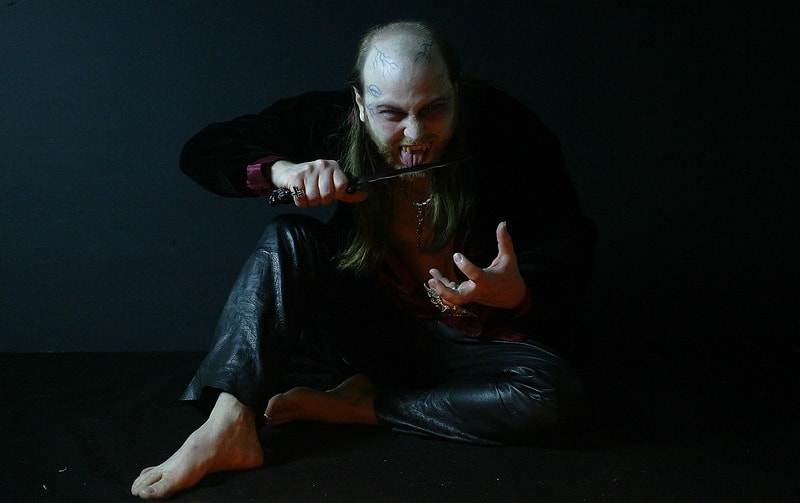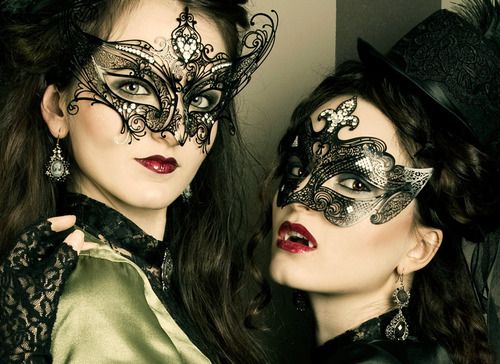With a new video game, Bloodlines 2, being released, I got curious about the underlying role playing game: What is Vampire the Masquerade? After doing some research and listening to some Actual Plays, this is what I learned.
Vampire is a game where the characters are vampires. As vampires they must struggle between what remains of their humanity and their bestial hunger for blood. Life is further complicated by vampire politics and those who hunt the hunters. Vampires have clans that have special powers and abilities.
Vampire is a game about social combat as much as it is about physical or magical force. This is because even as the Apex Predators (or at least as they see themselves as such), strict rules must be enforced or else they risk annihilation by humanity while they sleep.
The Rules or Traditions amongst vampires are:
- The Masquerade (do not let humans know you are a vampire),
- The Domain (you rule your domain and visitors must respect you while in it),
- The Progeny (you must get permission to make another vampire),
- The Accounting (until your progeny show they can follow the rules, their sins are yours),
- Hospitality (Honor each other’s Domains and present yourself to the local lord when visiting), and
- Destruction (you are forbidden to kill another vampire without permission).
Many of the powers of vampires emphasize their social power and influence as much as their physical prowess. But even within The Masquerade, there are factions of vampires. As of the most recent edition (5th) of the game all that remain are the Camarilla and Anarchs. The Sabbat were another major faction that was allegedly wiped out in the last few years by Second Inquisition.
To my knowledge, Vampire the Masquerade has the most in-depth, fleshed out mythology, lore, and canon of modern role playing games. A close second is probably Shadowrun. Do not let that discourage you from playing. Despite this deep lore, Vampire the Masquerade, 5th Edition, does an excellent job of giving players enough of what they need to know for a fun game.
Vampire the Masquerade is a dark game and is intended for mature audiences. Even with Bram Stoker’s original Dracula, through Ann Rice’s Interview with the Vampire, to the modern Vampire Diaries, the mythology of vampires is deeply intertwined with lust, power, and sex.
If you and your players are uncomfortable roleplaying these types of scenes and experiencing these dynamics, then you may want to try a different system. Or you can simply agree not to include those elements in the game.
Vampire Clans
The Clans span the various factions, alluded to above. In the lore, the original Vampire was Caine (of Caine and Abel fame). The various clans, some lost to time, originate out of Caine’s children (or childe).
In Vampire the Masquerade, Clans are a stand-in for character class. Clans have access to specific clan abilities and powers. While they can learn other clan abilities, it comes at an increased cost. This gives each clan its own feel and style. The Clans available in 5th Edition are as follows:
- Brujah — They are the punks, hipsters, and bohemians of the vampires. While they can be bruisers, ready to throw a punch, they are also philosophers in the style of Socrates (Socrates so annoyed the leaders of Athens because of his incessant questioning that they condemned him to death by drinking poison).
- Gangrel — They are the savage barbarians or outcasts of Vampire society. Their animal ferocity is great in a fight, but they never know which fork to use first at dinner.
- Malkavian — The Children of the Moon are crazy, but they are also oracles and visionaries.

- Nosferatu — They are the hidden clan, because their embrace always make them hideous to look at. Their lives in the sewers, unseen by polite society, makes them excellent spies and informants.
- Toreador — These are the Divas, Artists, and Hedonists of vampires. They’re sheer physical beauty and presence allows them to wield immense power.
- Tremere — They are the blood sorcerers of the vampires. Unlike the other clans, they were not started by Caine, but by the preverse magical experiments of the human Tremere. Seeking true immortality, he instead found vampirism.
- Ventrue — They are the stock-brokers, venture capitalists, and CEOs of the vampires. While not as personally glamorous as the Toreador, Ventrue know how to use systems and organizations to their own benefit.
- The Caitiff — These are the Clanless. They inherit, learn, or take powers and abilities from any or all clans. As such, they are often on the outskirts or edges of vampire society, picking at its edges. Even the Gangrel and Nosferatu look down at them.
- The Thin-Blooded — These are almost human-vampire hybrids, but not through procreation (as such). Instead, they were embraced by high-generation vampires and gained some vampiric traits, but also avoided some of their weaknesses. For Harry Potter fans, these are the Squibs.
Traits and Skills
Mechanically, Vampire the Masquerade has been a point-buy character creation system with a dice-pool conflict resolution system. Unlike Dungeons and Dragons, you don’t roll dice to determine your basic ability scores. Characters start with a certain number of points to spend on Traits and Powers. The older (lower generation) of vampire your group is playing, the more points you have.
All Traits and Powers can have between one and five “dots.” On the character sheet, next to the Trait or Power, are five empty circles. As you buy a level in each, you literally fill in the circle (aka place a dot). Each dot represents a die you can add to your dice pool when making a roll.
Vampire the Masquerade has the following traits for all characters:
- Physical Traits
- Strength — How much you can lift, how hard you can punch.
- Dexterity — Your grace, agility, and find motor control.
- Stamina — Your ability to withstand physical punishment, endurance.
- Social Traits
- Charisma — Your natural charm, grace, and sex appeal.
- Manipulation — Your ability to twist others with your words.
- Composure — Ability to maintain calm under pressure and have command over your emotions.

- Mental Traits
- Intelligence — Deductive reasoning, logic, and research.
- Wits — Adaptability, quickness of thought, observation
- Resolve — Your focus and determination to complete your course of action.
Skills are somewhat self-explanatory. These are abilities, knowledge, habits of muscle memory that you have learned in life or in undeath. Once again, each rank is called a dot and you can have up to five dots. Like traits or attributes, they are divided up into Physical, Social, and Mental skills. They include the following:
- Physical Skills
- Athletics
- Craft
- Firearms
- Stealth
- Social Skills
- Etiquette
- Intimidation
- Leadership
- Subterfuge
- Mental Skills
- Awareness
- Finance
- Medicine
- Politics
- Technology
Beliefs, Merits & Flaws
The next stage has you detailing who you were before being Embraced. What were your beliefs? These are important ties back to your former humanity. Remember, Vampire is about the tension between your old humanity and your new bestiality. When that humanity is destroyed, you have permanently lost control of your character. This is very similar to the Sanity mechanic in Gumshoe games.
But in addition to your beliefs, you must identify what type of predator you are. Those types include Bagger (you only eat cold blood), Cleaver (you only feed from your mortal family), or Sandman (you only feed from sleeping victims). This sets the other end of the tightrope your character must walk.
Finally, there are Merits and Flaws. Think Edges and Hindrances from Savage Worlds. These are small bonuses and penalties you have to take as part of character creation.
Disciplines
Disciplines are the clan-specific powers you character has access too. They still use the same one to five dot system. Given the number of clans, no discipline is unique to a specific clan. They are shared between several of them. The list of disciplines are:
- Animalism (ability to summon, speak to and control animals)
- Auspex (the Sixth Sense, reading auras, visions of the future)
- Celerity (grace and speed)
- Dominate (control others with your mind)
- Fortitude (strength of body)
- Obfuscate (hide and confuse the minds of others)
- Potence (power of the blood)
- Presence (capturing the attention of everyone and convincing them to do whatever you want)
- Protean (shapeshifting)
- Blood Sorcery (magic)
Unlike Attributes and Skills, each dot in a Discipline grants the Vampire a specific power. Some powers are passive and others are active. Passive powers do not require a rouse check; whereas Active ones do.
A rouse check simply means you are trying to rouse your blood, to call upon its power to fuel your action. Unlike other checks, a failure still means the power happens. But it means that you have become hungrier. A rouse check requires the player roll a single d10 and get a six or higher on it.
Whether it is an Active or Passive power, each dot gives the player something special she can do for each level in a Discipline. The first dot often unlocks two powers.
For example, two dots in Animalism allows the vampire to blood bond an animal (create a familiar). They can also “Sense the Beast” by making an opposed Resolve+Animalism vs. Composure+Subertfuge to detect the hostility level of people and creatures.
The Level 2 Animalism power is Feral Whispters, which allows the Vampire to talk with animals. This ability is active, so it requires a Rouse Check. They can either perform a Manipulation + Animalism or a Charisma + Animalism check depending on what they’re trying to get from te animals.
Generations
A vampire’s generation refers to far away they are from Caine (1st Generation). Virtually nothing is known about the 2nd and 3rd generations (Caine’s childe and gran-childe), who are collectively referred to as the Ante-Deluvians. They were either destroyed or live in a torpor.
The same is true of the 4th generation, called the Methuselahs. They came soon after the Biblical flood and are also of immense power. Any who survive are also asleep, hidden before the earth.
As players, you are most likely going to play between a 10th to 13th generation vampire. If a 13th generation vampire embraces a mortal, then they will likely be thin-blood. This is why vampire society is so careful about progeny, the blood can become too thin.
Generally, the older you are as a vampire, the higher the generation you will be:
| Generation | Era when Embraced |
| 2nd-3rd | Ante-Deluvian |
| 4th-5th | Methuselahs: dawn of recorded history |
| 6th – 9th | Elders: Roman Era to Renaissance |
| 10th – 11th | Ancillae: 1700s to early 1900s |
| 12th – 13th | Neonates: mid to late 1900s |
| 14th – 16th | Thin Bloods: 2000s |
Your generation does not have a correlation to how old you were at the time of your embrace. You may have been embraced in 2011 at the age of 80, but are still a Thin Blood if your Sire was a 13th or 14th generation. Or if your Sire was a 11th Generation, then you would be a new vampire of the 12th Generation.
So these time periods are not hard and fast rules. But they tend to speak of not only your power, but of your experience within the murk of vampire politics. The more time you’ve spent gathering relationships, the more power and influence you’re likely to have. But that makes you a target and you’ll need thick enough blood to defend your domain. Vampires are the ultimate group of Mean Girls.
Conflict Resolution
Vampire the Masquerade uses a dice pool resolution system. The only die used is a d10. Most skill checks are made with an associated attribute. For example, a Brawl Check (punching someone) will usually be a Brawl+Strength check.
The Player counts the number of dots she has in Brawl and Strength. The total is how many d10s she rolls. So if her character has 2 dots in Strength and Brawl, then she is rolling four d10s.
Like with other pool systems, you do not add up the dice. Instead you are looking for the number of successes. For 5th Edition Vampire, a success is on a six or higher. For each pair of tens that are rolled, it counts as four successes. Unlike prior editions, in 5th Edition, rolling a one does not subtract from the total number of successes.
After counting up the total number of successes, the Game Master will tell the player if it succeeded or not. The difficulty of the test is set by the Game Master. Typically that will be in the range of one to five successes if the test is against a passive object or foe.
Another way of setting difficulty is through opposed rolls. In the example above where the character was attempting a punch, if the foe sees it coming, then they may try to dodge. The defender might make a Brawl+Dexterity roll to dodge. If the attacker has more successes than the defender then the punch lands.
In opposed roles, the effect of the attack or skill used is determined by the degree of success: how many more successes did the attacker role compared to the defender. In a fight, each additional success does an additional point of damage.
Hunger
Vampires are hungry. Every evening when they awaken, they must make a rouse check (roll a six or higher on a single d10). A failure means their hunger goes up by one point. Feeding on prey (humans) lowers that hunger.
However, hunger can never go to zero unless the prey is killed by the feeding. That death may create a tension between your humanity and your inner beast, which is called a Stain.
in 5th Edition Vampire, hunger is a constant effect whenever a player makes a die pool role. If the player is rolling four d10s, but they have two dots in hunger, then they must replace two of the four dice with Hunger Dice. These should be differently colored dice compared to your normal set.
Those hunger die only become an issue under two circumstances. First if you have a 10 on the Hunger Die and another 10 is rolled. This turns that critical success (four successes) into a messy Critical. While succeeding, the beast takes over a bit and the situation just got messy.
The other effect is a critical failure. This occurs only if there are no successes, but there is a 1 one a hunger die. This is called a Bestial Failure. The Vampire must act out a compulsion and as a result they either take increased damage from an attack or their hunger increases by a point.
Once a Vampire reaches Hunger Level 5, then they risk a Hunger Frenzy. The Vampire must make a Difficulty 4 Willpower check to resist going into a frenzy and finding the closest human to feed on until slated. If it is a close friend from before, they risk loosing their humanity. As the Hunger level goes up, then so does the difficulty to resist the Frenzy.
If you want to check out more of the Gumshoe RPG products directly, please go to my Resources Page for links to their various settings and products! If you want to listen to an Actual Play of Vampire the Masquerade 5th Edition, I recommend listening to Happy Jacks RPG’s Glittering Night podcast.
If you want to explore the wilder (and wider) world of tabletop roleplaying games go there! If you want to start to learn on how to paint miniatures, click already! Or maybe you want to read more of my posts about Dungeons and Dragons, then click away here!

